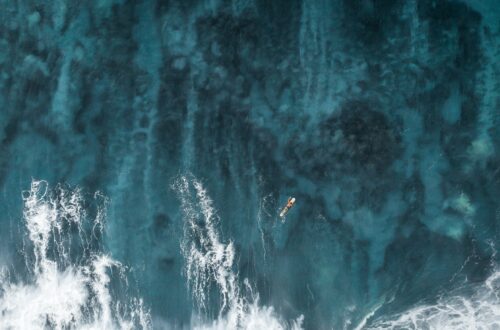
Nach der Stille
It is a piece of electroacoustic music for eight or four loudspeakers or stereo, based on several
layers, moving sound objects – which alternate and create a different spatial perception in
the audience surrounded by them. The main theme of the piece is the impression that exists
in the modern western world about a war, on the bombing of Syria and for this reason it is
made from the reflections of a basic sound. A recording was used as source material, as well
as a draft (in Audacity) of a shooting simulation. Based on these two, a polyphony was
created not only of sounds, images, but also of space. Objects are transformed so that one
emerges from the other. Pitch shifting, time stretching, delay lines, but above all reverbs.
In this piece, reverb is what shapes the content, connects, binds, and constructs a poetic
result.
In creating this piece, great emphasis was placed on the source material of the sound, its
structure, regeneration, and evolution. The sonic behaviour of a gunshot in different sound
environments and the role played by reverberation were investigated. Although there was
no recording of a real shot, the different types of rifles were studied to understand that their
constructive differences in terms of the parts they are composed of, and the materials
produce different sound effects. The recording that took place in the Atelier Neue Music is
a simulated recording (sound production from the mouth), as it was done for experimental
purposes, as well as the sound design in the program Audacity were considered satisfactory
enough to form the basis for the creation of new sounds that formed the material for the
construction of After the Silence and the creation of a new personal sound bank.
Overview
First, we focused on the clean, dry sound of a shot without any reverberation. That is, the
first step was to isolate the actual shot from its environment, examine it, understand its
characteristics, and record it. So, it was found that the studio recording of the simulated
shot had the same characteristics as the recording of a real shot in a reverberation room.
They were both remarkably short sounds.
“The actual burn time is very short. The explosive decays at a velocity between 5,000m/s
and 8,000m/s, so a 10-mm projectile will have used all its fuel in about 2 ms. During this
time, a large amount of energy is released. To get a feel for the numbers, consider that a
rifle bullet traveling at 800m/s contains the same kinetic energy as a 500 kg motorcycle
traveling at 80 km/h. The reason for this is the high velocity due to the short firing time,
and the formula for kinetic energy is E = 1/2MV 2, for mass M and velocity V. The range
of kinetic energy is from 11 kJ/kg for a handgun to 500 kJ/kg for a sniper rifle. Thus, the
sound of a bullet explosion is like a single, extremely loud click, which we call a pulse.”
Techniques
Next, the clean, dry sound was transformed and processed to create a variety of new sounds
with completely different properties such as timbre, duration, texture, frequency, etc.
The first thing that was changed in Basic Sound was the reverb, which gave impressive
results. This was followed by techniques such as time stretching and pitch shifting to create
sounds of different durations, which were used to create rhythmic patterns or even long,
drawn-out sounds that contributed to the drama and development of After Silence.
Then new sounds were created using ring modulation and flanger. Both techniques were
applied to low frequency sounds to give them a new texture by colouring them and making
their position in space clear(localization). Finally, subtraction techniques were used with
basic filter types such as low-pass, high-pass, band-pass, etc.
Repetition
Essentially the whole piece is a repetition of the same sound, but none of the sounds in the
track are the same and each of them appears only once in the track.
Repetition plays an important role in the dramaturgy of the piece because it allows us to
create a very different effect from the same material. One of my thoughts on the role of
repetition is to compare it to the actual material (news) of a news report (e.g., a war), how
it can change or embellish or not embellish the material for the recipients (the audience),
but it certainly reaches them in a very different way.
Silence/Pause
Silence reigns before war or disaster. Silence is insidious. It is a trap. Often silence means
destruction, violence coming our way. That is exactly its role in this piece. It implies the
tension, the chaos, the fortissimo. It emphasizes the contrasts of volume and makes the
pianissimo more evident.
Localization
The loudspeakers are arranged in a circle around the listeners, as shown in the figure below:


In most of the piece, the sounds move very slowly between the 8 speakers. Most of the movement is reminiscent of a pendulum, and the movement is mostly in the front part of the circle (speakers 1,2,3,4). Sometimes it works like a pendulum in the right hemisphere and sometimes it moves slowly and circularly around the center. Finally, there are times when the sound moves from the outside of the circumference of the circle.









Conclusion
What do we know about the war next door?
What messages reach our ears and how much do we understand their meaning? How does
it make us feel? Are we receiving reflections of a real event even though we have no
experience? After the Silence is a piece that raises questions. It gives no answers and points
no finger at anyone. Will we respond? Will we demand the truth to live in a better world
without wars; now or never.





